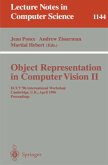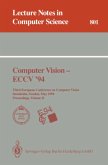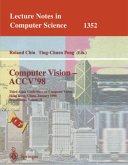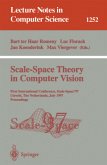Given a familiar object extracted from its surroundings, wehumans have little difficulty in recognizing it irrespectiveof its size, position and orientation in our field of view.Changes in lighting and the effects of perspective also poseno problems. How do we achieve this, and more importantly,how can we get a computer to do this? One very promisingapproach is to find mathematical functions of an object'simage, or of an object's 3D description, that are invariantto the transformations caused by the object's motion.This book is devoted to the theory and practice of suchinvariant image features, so-called image invariants, forplanar objects. It gives a comprehensive summary of thefield, discussing methods for recognizing both occluded andpartially occluded objects, and also contains a definitivetreatmentof moment invariants and a tutorial introductionto algebraic invariants, which are fundamental to affinemoment invariants and to many projective invariants.A number of novel invariant functions are presented and theresults of numerous experiments investigating the stabilityof new and old invariants are discussed. The main conclusionis that moment invariants are very effective, both forpartially occluded objects and for recognizing objects ingrey-level images.








